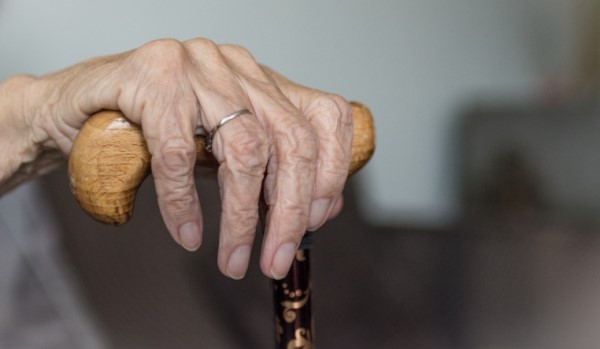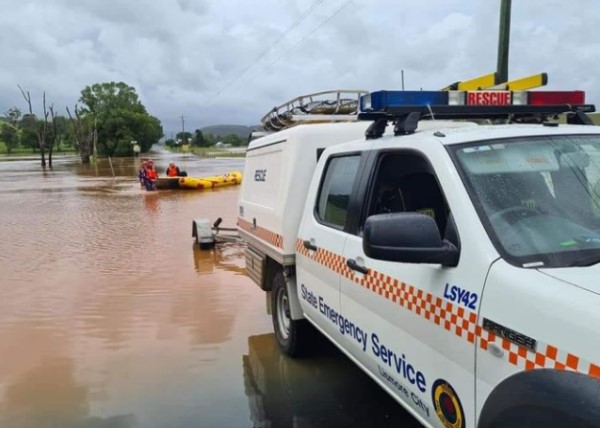Selected
- Details
- Written by Grant Broadcasters
- Category: Selected
- Hits: 149

NSW has reported 13,093 new COVID-19 infections along with a further seven deaths.
The state's caseload continues to fluctuate.
Numbers were below 10,000 at the beginning of last week and peaked at more than 16,000 on Thursday, while Saturday's total was 12,850.
Health officials said the majority of fresh infections are among the young, aged between 10 and 19.
Meanwhile, the number of patients in hospital is steady at 965, with 44 in intensive care.
Of the latest infections, 7867 were detected using rapid antigen kits and 5226 were returned via PCR lab tests.
The state's booster vaccination coverage is still short of the levels authorities had hoped for.
Some 57 per cent of eligible adults have received a third dose, while 95.9 per cent per cent of those 16 and over have had one vaccine shot and 94.4 per cent two.
- Details
- Written by Grant Broadcasters
- Category: Selected
- Hits: 141

A University of South Australia study focusing on kids who've suffered abuse or neglect has found the activity is one of the biggest recovery predictors in both boys and girls.
While reading to children at home has long been linked to school readiness and scholastic outcomes, the research is the first to show its benefits in mitigating maltreatment.
With one or more child protection notifications affecting nearly 300,000 Australian kids last year, a third were the subject of investigation and nearly 50,000 featured substantiated abuse or neglect.
The UniSA study found involvement in the child protection system to be strongly associated with poorer functioning at school commencement.
Those a little older than their peers when starting kindergarten, those without an emotional condition and those read to at home were better able to bounce back.
Maltreated boys demonstrated less resilience overall than girls but both had more than three times the odds of showing recovery signs when read to regularly at home.
Lead researcher, Professor Leonie Segal says there is an acute need to support struggling children and their families before they go off to class, with reading a key factor.
"A good start to school is predictive of later outcomes," she said.
"It's vital we not only identify those at risk early on but also find ways to support children's emotional, social and physical development.
"Reading out loud can create many positive outcomes."
Prof Segal says as a shared experience between parent and child, reading encourages connection while contributing to development through exposure to words and stories.
"Children in families that are struggling to create a nurturing environment will especially benefit from reading with a parent or carer, improving their resilience and keeping them developmentally more on track, despite their adversity exposure," she said.

The study analysed data covering more than 65,000 children who had completed the Early Australian Development Census when starting primary school.
It identified over 3400 at high-risk who had experienced maltreatment.
"Our study found boys had a much higher risk of being developmentally behind than girls, as did children living in remote or rural areas and those with a physical, sensory or learning disability," Prof Segal said.
"All these groups need far greater supports."
The study also recommended recruiting more male educators into early childhood settings and ensuring learning approaches sensitive to the specific needs of boys.
Images: Pixabay free images
- Details
- Written by Grant Broadcasters
- Category: Selected
- Hits: 151

Where a neighbourhood's medical services are located, how much green space it offers and how willing its volunteers are can affect the ability of older Australians to successfully age at home, researchers say.
Dr Danielle Taylor believes a new health, ageing and environment index developed at the University of Adelaide will help evaluate not only factors that support senior citizens but those which render them more vulnerable.

As a starting point, her staff have mapped out 142 postcode areas within the South Australian capital to determine those where people over 65 are most 'at-risk or protected'.
The first to be assessed is a suburb associated with higher exposure to mortality and early transition to residential aged care, Dr Taylor says.
Some 40 variables are being examined across six indicator groups: income and employment, education, housing and health, social connectedness, geographical access and physical environment.
"While environments are by nature complex, using the HAVEN index we have shown neighbourhood environments are significantly associated with the health and wellbeing of older people and the ability of older Australians seeking care to age in place," Dr Taylor said.
Outcomes from the federal aged care royal commission, which handed down its findings in March last year, show most Australians would prefer to stay at home as long as possible.

"Keeping older Australians independent, active, healthy and happy for longer is a worthy goal, not only because of the benefit to them but also ... the economic benefit it can deliver," Dr Taylor said.
"We are not simply talking about savings to the public purse through their reduced need for health services but also the productivity gains brought about by the contributions older Australians make to the economy and society when they are able to age well."
So far the HAVEN index has clearly shown optimising environmental factors is key to best supporting healthy ageing, Dr Taylor said.
University of Adelaide Professor Renuka Visvanathan, a member of the World Health Organisation's Clinical Consortium of Healthy Ageing, said the index is especially relevant in light of the UN's Healthy Ageing Decade.
"This is a period where internationally we are focusing our efforts on developing a more comprehensive understanding of the many factors that contribute to successful ageing," she said.
Images: Pixabay
- Details
- Written by Grant Broadcasters
- Category: Selected
- Hits: 128

More than 100 mobile home units are on their way to flood-ravaged communities in NSW, as the emergency services minister pledges "unprecedented resources" to help with the clean-up.
Prime Minister Scott Morrison, who toured the flooded Windsor region northwest of Sydney on Saturday, said 20 similar units had already been set up across Lismore in the north of the state.
It is estimated two-in-three damaged homes in that region will need to be demolished or undergo substantial repairs after the severe floods and storms this month.
"It's going to be a long road back," Mr Morrison said on Saturday.
The support came after a national emergency was declared in NSW late on Friday, triggering additional resources for flooded areas.
The declaration will last three months and allow the federal government to access stockpiled resources and remove red tape around welfare support.
Mr Morrison said Queensland Premier Annastacia Palaszczuk had knocked back a similar offer for her state, with Ms Palaszczuk saying on Thursday help had been needed a week earlier.

Assistance has also been extended to a further 12 local government areas in NSW.
Those LGAs are: Cessnock, Cumberland, Dungog Shire, Goulburn Mulwaree, Lithgow, Maitland, the mid-western region in the Central Tablelands, Muswellbrook Shire, Queanbeyan-Palerang, Singleton Shire, Snowy-Monaro, and Upper Hunter Shire.
The support will be provided through the jointly funded Commonwealth-State Disaster Recovery Funding Arrangements, with some regions remaining at emergency level despite waters receding in other parts of the state.
NSW Emergency Services and Flood Recovery Minister Steph Cooke said the support would extend to thousands of households, small businesses, primary producers, non-profits and councils.
"The immense scale of the flooding is unprecedented and we are working closely with the Commonwealth to put equally unprecedented resources into the significant clean-up and long-term recovery effort," Ms Cooke said.
Images: NSW SES
Page 72 of 191